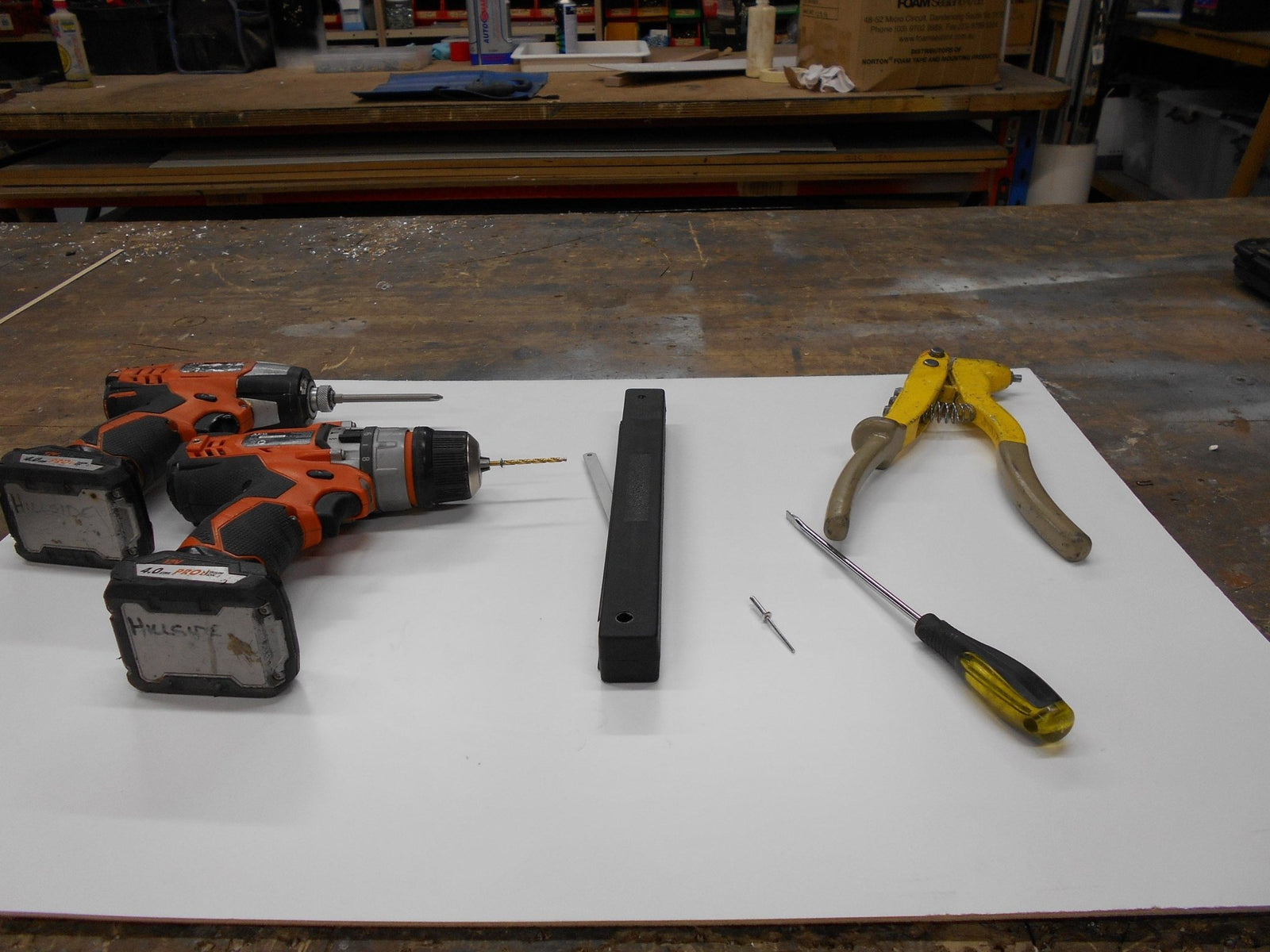DIY wind-out window regulator

The wind-out Camec window is commonplace within the Australian RV industry and will provide years of trouble-free service. However, like all devices, the lack of use rather than overuse can cause damage to the internal mechanism particularly when the window is not opened for a number of years and hence the window blade sticks hard and fast to the frame. Regular use and cleaning around the internal/external window frame will ensure smooth operation over time. One benefit of this design compared with a strut window for example is that the owner can adjust the window to the desired or flexible opening range whereas the strut design has specific opening stages.
The image opener shows the tools required to remove and replace a Camec RV wind-out window regulator. In this DIY we are replacing just one regulator.
You can use this guide to replace both regulators should this be required, however we recommend to do one at a time. (Handy hint: Whilst not shown here, have a good old tomato rod or broom on standby to take the weight of the actual window.)
NB. These images and step-by-step captions depict the simplicity of this replacement of a Camec RV wind-out window mechanism performed by The RV Repair Centre service technician, Daryl Summers, in Bayswater, Victoria.
STEP 1
Open the window as shown and if required (pending size and weight of window) place a rod or broom from the ground to the outer edge of the window frame to steady the window.
STEP 2
Flick out the flyscreen by using a blunt blade such as a screwdriver and commence peeling this back. Just disengage the flyscreen within the area of the wind-out window regulator you’re replacing. If replacing both regulators (left and right), remove the entire flyscreen.
STEP 3
Fold back the flywire to provide enough room to access the window regulator or remove the entire screen if desired.
(NB. Mark the position of the top corners with white marker or tape.)
STEP 4
The aluminium rod that joins the left and right regulators is removed by placing a little pressure on the rod as shown. Most rods will have a centre support to hold the rod in position at the top of the window. Just pull the rod away from this central support to allow the flex required to remove the rod from each regulator.
(NB. The rod just sits within the regulator aperture at each end so there is no circlip or rivet etc to remove first.)
STEP 5
Remove the window regulator arm from the window blade by drilling out the rivet as shown.
STEP 6
It’s time to remove the faulty regulator from the window frame by drilling out the rivets as shown.
STEP 7
With the mounting rivets now removed, the faulty window regulator can be removed from its position.
STEP 8
The new window regulator and flyscreen completed.
(NB. Once the faulty window regulator is removed, place the new window regulator in the same position and attach by using new rivets to the window frame and the same to the regulator arm to the window blade. Refit the flyscreen by manipulating (just use your thumbs) the flyscreen back into the window frame groove.
STEP 9
It’s time to refit the aluminium connecting rod and centralise the two regulators to ensure the window blade opens and closes correctly. Place the rod in non-winding window regulator first (this can be done with the window open or closed). It’s now just a reverse procedure to reinstall the rod into its position taking note of the following: slightly bend the centre of the rod and slot this into the winding regulator aperture and clip the rod into the holding bracket at the top centre position of the window frame. Assuming the window blade is even both sides or flush with the window frame the window should wind in/out evenly. If so, your DIY is complete. However, if you find the window blade is ‘offset’ when closing you will need to remove the rod from the winding end and either open or close this regulator by half a turn then refit the rod and recheck.
STEP 10
Your DIY project is complete and ready to use.







